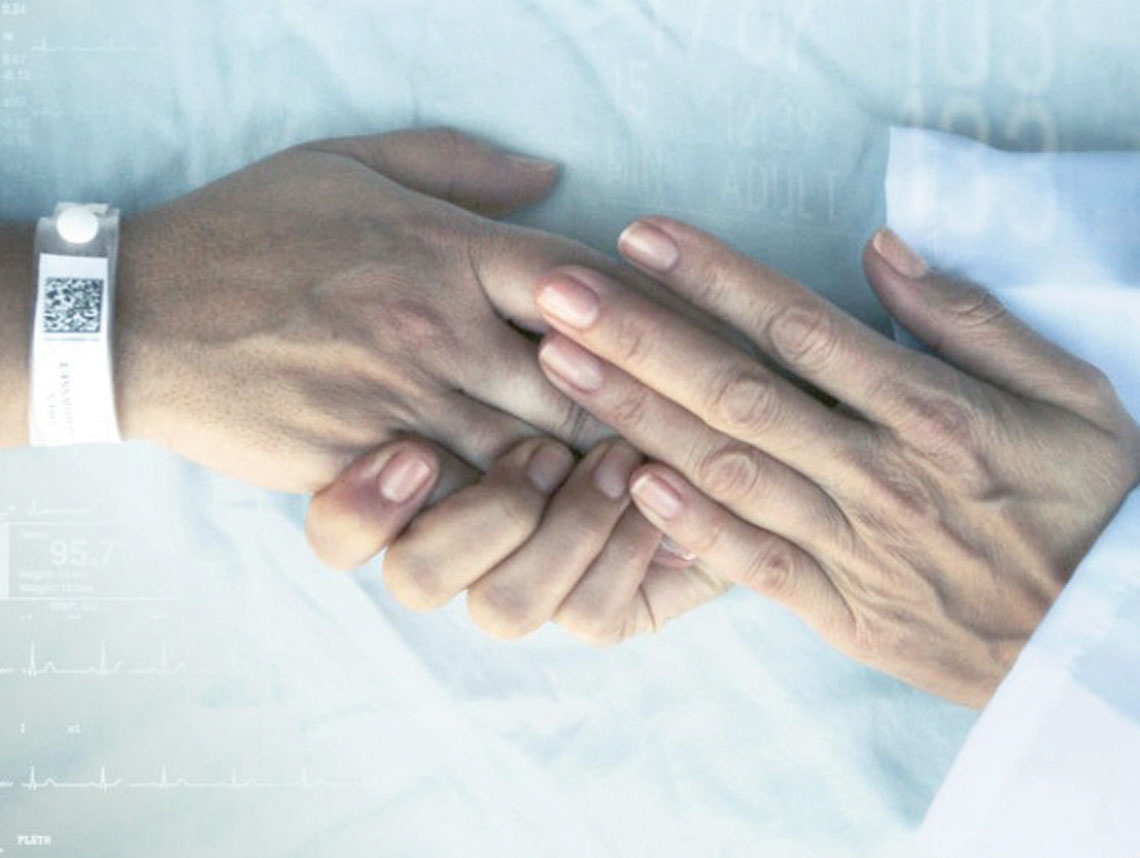 Photo courtesy of Netflix
Photo courtesy of Netflix On Yom Kippur, while contemplating our mortality, we ask “Who shall live, and who shall die?” Expanding on that question, the Academy Award-nominated documentary short “Extremis” wants us also to consider: Who shall die without heroic measures?
The film, moving along as if to the whoosh of a ventilator and the beep of a heart monitor at only 24 minutes, manages to take us, beat by beat, through the end-of-life decisions of several patients in the intensive care unit of Highland Hospital in Oakland.
For those who already have lived this documentary with a beloved family member or friend, the film explores a familiar territory of the life-and-death decisions that we make for ourselves and for others, and how, through our perceptions of human suffering, dignity and spirituality, we come to them. But for those who have yet to travel to these rooms of too-white walls, it presents a roadmap of the challenges ahead, the clarity we must find in the often chaotic ICU environment to reach a peaceful, dignified death.
Our behind-the-camera guide to this moral quandary is Dan Krauss, a Berkeley filmmaker and lecturer in UC Berkeley’s Graduate School of Journalism, whose previous films have explored such issues as suicide (“The Death of Kevin Carter”) and the moral dilemma of a solider (“The Kill Team”) who knows his platoon has killed innocent civilians.
In “Extremis,” Krauss documents, through a nonjudgmental point of view, how two families and their loved ones — Selena, who has suffered severe brain damage, and Donna, a woman with severe myotonic dystrophy, muscle degeneration — decide on a course of action.
“I’m a 44-year-old guy with two young kids and a happy life. Why would I spend three months in the ICU with people who are nearing end-of-life?” Krauss said in an interview with the Journal, wrestling with the question of why he felt compelled to pursue the project. “Death is a subject that I am not comfortable with,” he admitted. “Artists, people who do creative work, often are addressing their own fears in their work, and we have to force ourselves to march in the direction of our fear.”
A Jew who doesn’t see himself as person of great spirituality, Krauss said that at the outset of the project he had very little awareness of the decision-making in an ICU.
But as he began to acclimate to that environment, “I did witness moments of quiet beauty, and I started to appreciate the ICU as a place where faith and science collide in a fascinating way,” he said.
Along with those moments in the ICU, Krauss said he was struck “by the burden that was placed on the medical staff,” including the times when he witnessed Dr. Jessica Zitter being “very frank with families about the likelihood of their loved one recovering.” Yet, “very often,” he added, “those families were grateful to have someone give it to them straight and not sugarcoat it.”
Giving bad news, knowing when and how to say it, were not skills Zitter obtained at med school. “We are not taught that communication of bad news is a skill like any other, like intubating a patient or putting in a big catheter,” she told the Journal. “We practice those skills over and over again, but we don’t practice the skills of communication, which I would argue are the most important of all.”
Zitter, who is shown counseling the families of Selena and Donna about the use of a ventilator, comes from an extended family of surgeons and emergency room doctors. She originally trained as a pulmonary and critical care physician, then became interested in palliative care, she said, as a result of the “moral distress” that she experienced as an ICU doctor in a hospital in New Jersey.
Working in the ICU, she “started out as very gung-ho,” she said. “I wanted to save every life that was to be saved. I wanted to prolong every heartbeat.
“I started to see the unintended effect that I had never imagined — that by prolonging the life of people who were dying, we really cause a lot of unnecessary suffering.”
Zitter has a book coming out titled “Extreme Measures: Finding a Better Path to the End of Life.” Discussing her views on modern bio-ethics, she said she believes that it is “completely acceptable ethically to withdraw life-promoting treatments from somebody if it’s in concert with their preferences to allow a natural death.” It’s a view that receives some pushback in the film, as when she explores the option of taking Selena off a respirator. Selena’s daughter, who is hoping for a miraculous recovery, responds: “It would feel like murder.”
A Conservative Jew who also likes to attend a Modern Orthodox shul in Oakland, Zitter said she understands that her point of view about taking terminally ill patients off life-sustaining equipment is at odds with traditional halachah.
“You would think palliative care is a natural fit with Judaism, but in the way we think about death halachically, you cannot disconnect something that is keeping someone alive,” she said. With the rapid emergence of technology, Zitter feels that Jews need to catch up halachically. “We need a responsa,” she said, referring to a rabbinic answer to a difficult question.
As the first short to be distributed as an original film on Netflix, according to Krauss, “Extremis” is reaching a worldwide audience. It has already been translated into several dozen languages. As a result, he has received many requests from the medical community to use it as a training film. “It’s a wonderful feeling,” he said.






















 More news and opinions than at a Shabbat dinner, right in your inbox.
More news and opinions than at a Shabbat dinner, right in your inbox.